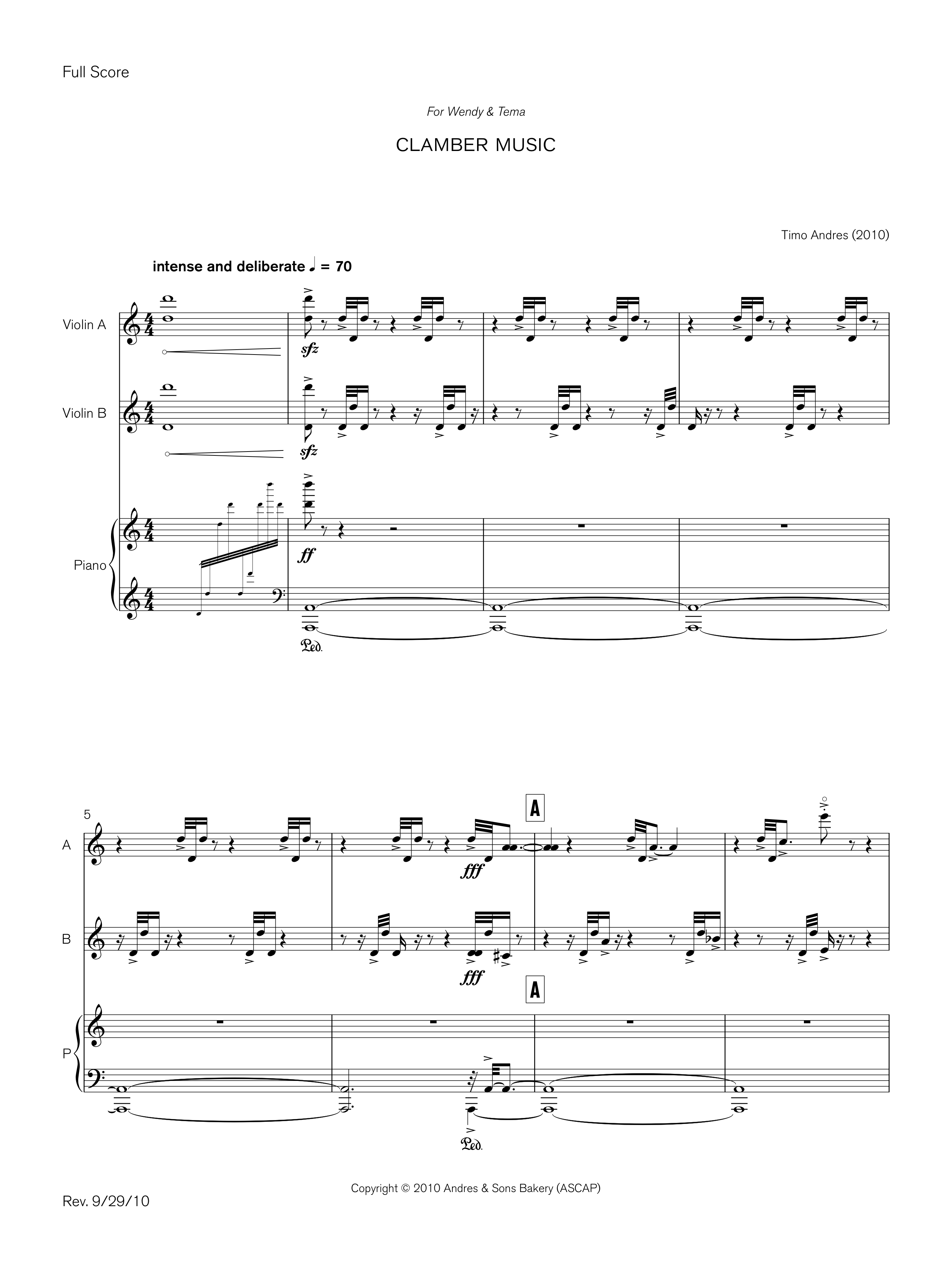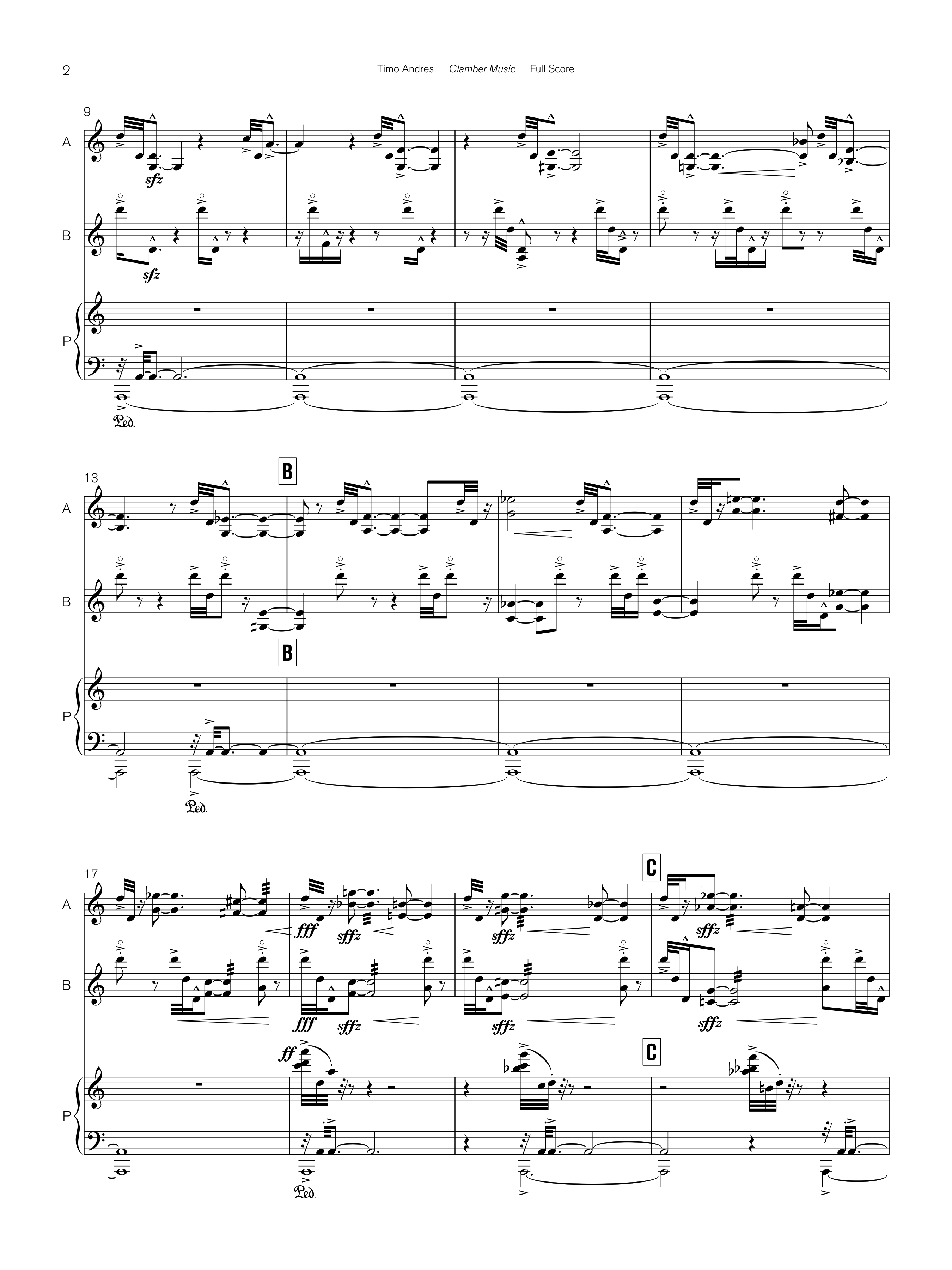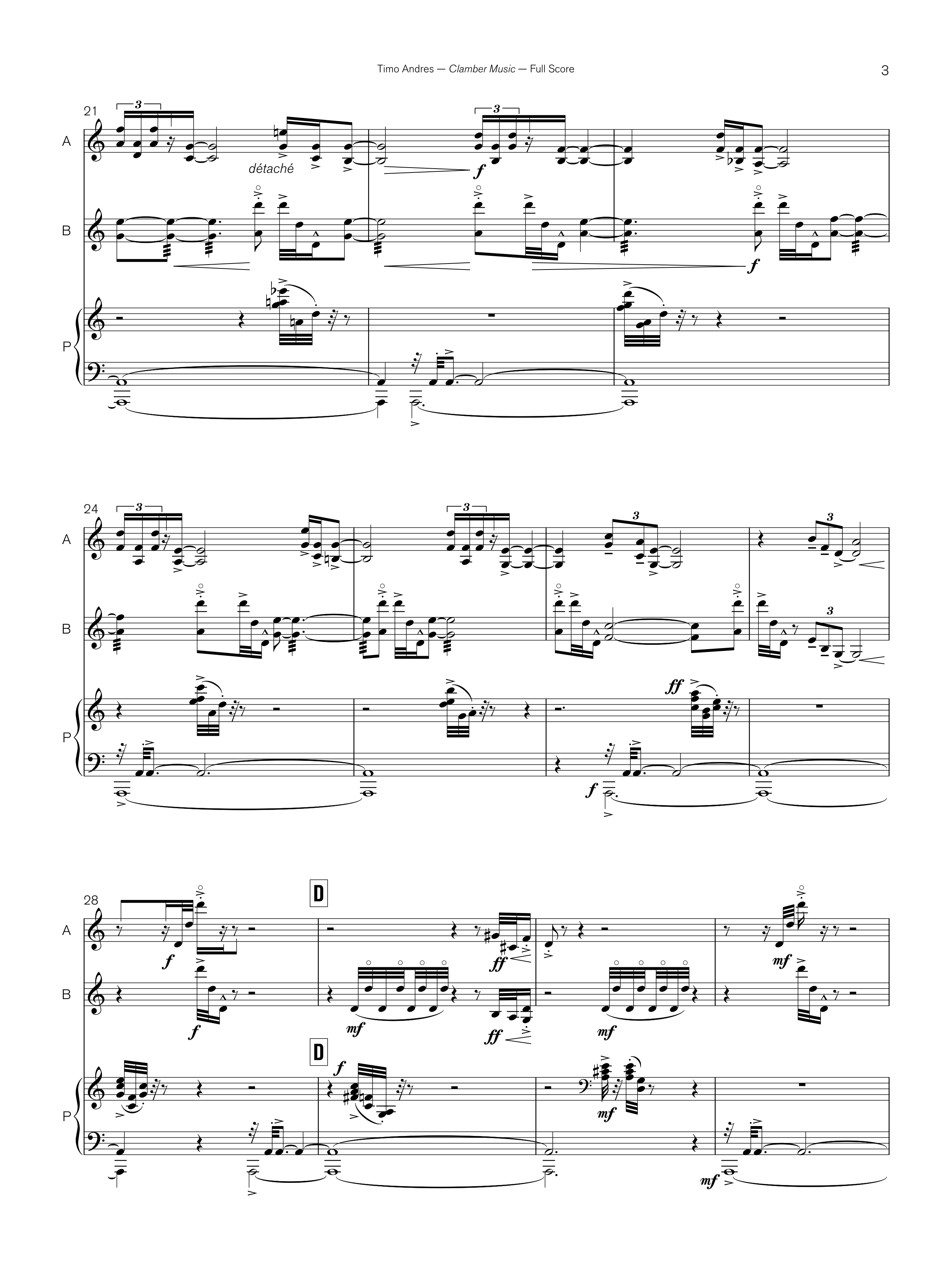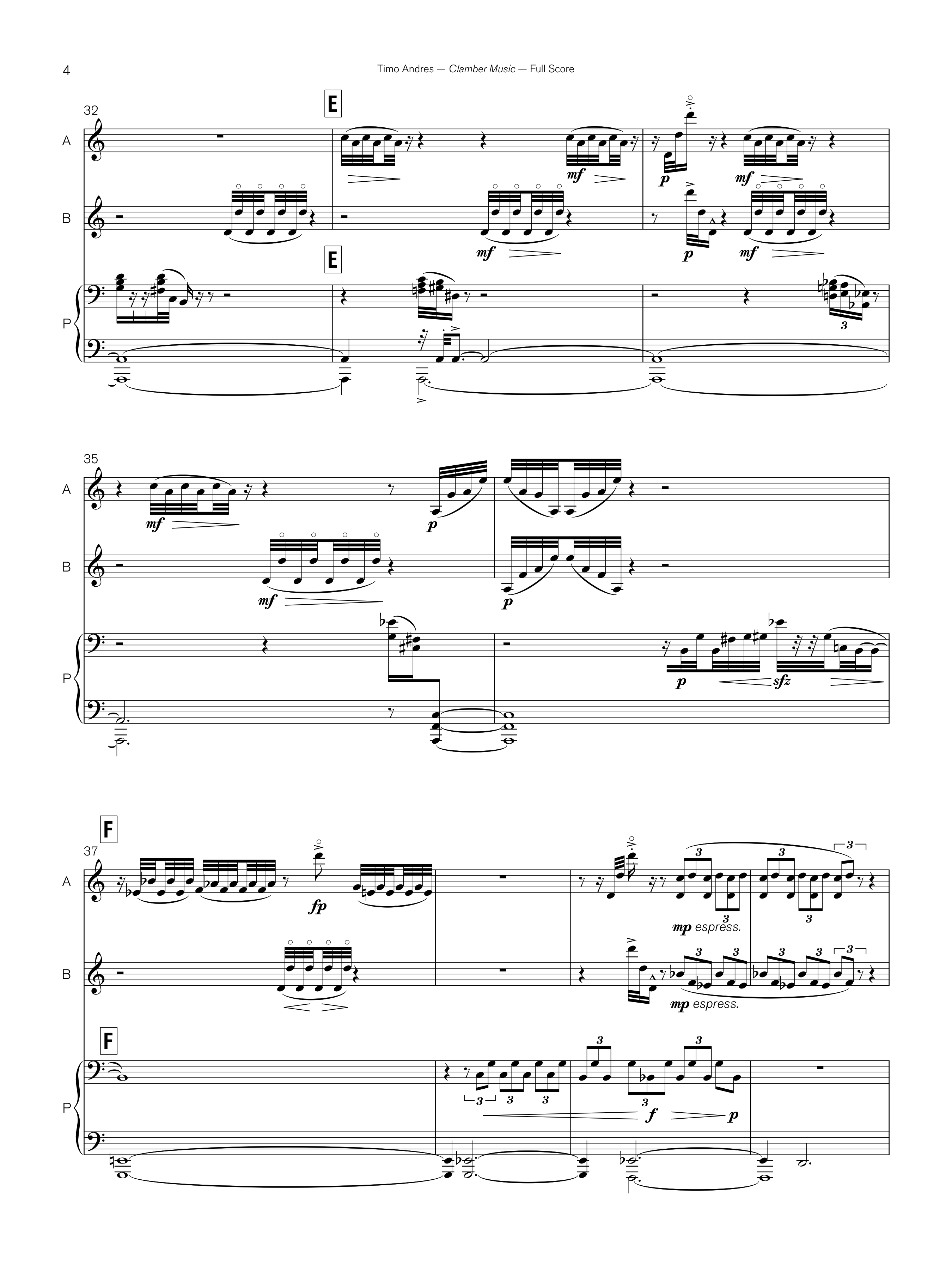Note
Wendy Sharp’s life is devoted to teaching other people, from the tiniest of babies to the surliest of graduate students, about playing and understanding music. Clamber Music, written for Wendy and her former student Tema Watstein, is therefore a piece on the subject of pedagogy.
The violin is the instrument with the second-best repertoire to choose from, after the piano. Despite this, young violinists (and this seems to be the same all over the world) endure years of studying what could kindly be called “pedagogical” literature. This is the music you work on before you’re to be trusted with a Brahms sonata, and it was mostly written by other violinists expressly for that purpose. As a former accompanist to many of Wendy’s students and an older brother to one, I’ve learned much of this sub-genre by proxy.
Clamber Music is a free set of variations on a theme, in reverse (each successive section bears more relation to the theme). The theme in question is an amalgamation of the sublime and the somewhat less sublime: Schubert’s Moments Musicaux no. 2, and Johan Svendsen’s Romance in G. I’ve always mentally associated the two because they share the same first four notes. The end of the piece is a kind of Gradus ad Parnassum, though also in reverse.
Listen
Timo Andres: Clamber Music
recorded live at 111 West 67th St
performers Owen Dalby & Tema Watstein, violins; Timo Andres, piano
Purchase
-
Clamber Music score & part, print edition
-
Clamber Music score & part, PDF edition
22 pages, 9×12 format. Includes full score and violins part (both violinists use the same part).



